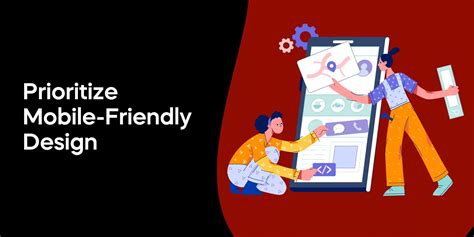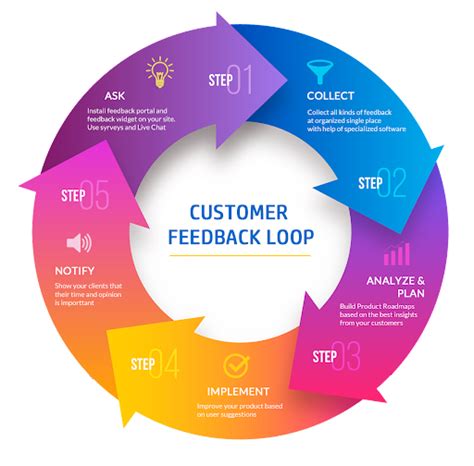When it comes to creating a compelling online presence, it is crucial to prioritize the overall user experience. A well-designed website should captivate visitors with seamless navigation, engaging content, and intuitive functionality. By implementing strategic approaches, website owners can enhance user satisfaction, encourage longer browsing sessions, and boost conversion rates.
Aesthetics
The visual appeal of your website plays a pivotal role in capturing and retaining user attention. Employing a visually appealing color scheme and selecting appropriate fonts can create a harmonious and professional atmosphere. An organized layout with ample whitespace can also enhance readability and make information easier to digest. Remember that simplicity is key - a clutter-free design will prevent users from feeling overwhelmed and encourage them to explore more of your content.
Responsive Design
In today's era of smartphones and tablets, it is imperative to ensure that your website looks and functions flawlessly across all devices. Adopting a responsive design approach allows your site to automatically adapt to different screen sizes, assuring a consistent and optimal browsing experience for users. Responsiveness not only improves accessibility, but it also helps in SEO, as search engines prioritize mobile-friendly websites in their rankings.
Streamlined Navigation
Efficient navigation is the backbone of a user-friendly website. Ensuring that your website's structure is logical and intuitive will help visitors quickly find what they are looking for. Implement well-placed menus and clear navigation labels to aid users in easily moving between pages. Additionally, integrating a search bar can further simplify the browsing experience, allowing users to directly access specific information without wasting time.
Engaging Content
Compelling and valuable content is a crucial component of a successful website. Engage your audience with relevant and up-to-date information, presented in a concise and easily understandable manner. Implement multimedia elements such as images, videos, and infographics to make your content visually appealing and interactive. Additionally, consider incorporating social sharing buttons, allowing users to effortlessly share your content on their preferred platforms, expanding its reach.
Page Speed Optimization
Quick loading times are paramount to prevent users from leaving your website out of frustration. Implement performance optimization techniques such as compressing images, minifying code, and utilizing caching mechanisms to ensure speedy page loads. Additionally, consider utilizing CDN (Content Delivery Network) services to take advantage of global server networks, reducing latency and enhancing the overall browsing experience for users worldwide.
By paying careful attention to these key aspects, website owners can elevate the user experience and create a website that not only looks appealing but also functions flawlessly. Emphasizing the importance of aesthetics, responsive design, streamlined navigation, engaging content, and page speed optimization will drive user satisfaction and lead to increased conversions and a loyal user base.
Improve the Loading Speed of Your Website

In today's fast-paced digital world, the speed at which your website loads can greatly impact user satisfaction and engagement. Slow loading times often lead to frustration, increased bounce rates, and loss of potential customers. Therefore, optimizing the loading speed of your web pages is crucial for providing a seamless browsing experience for your users.
Here are some effective strategies to enhance your website's loading speed:
- Optimize Image Sizes: Reduce the file size of your images without compromising on quality. This can be achieved by using compression techniques or choosing the appropriate image format for each image.
- Enable Browser Caching: Leverage browser caching to store static files, such as CSS and JavaScript, locally on a user's device. By doing so, subsequent visits to your website will be faster as the browser can retrieve these files from the cache rather than downloading them again.
- Minify CSS and JavaScript: Remove unnecessary characters and spaces from your CSS and JavaScript files to reduce their file sizes. This can significantly improve loading times, as smaller files are transferred and parsed more quickly by browsers.
- Utilize Content Delivery Networks (CDNs): CDNs distribute your website's static content across various servers worldwide, allowing users to access data from a server closest to their location. This reduces latency and improves loading speed for users in different geographical locations.
- Avoid Redirects: Minimize the use of redirects on your website, as they add additional time to the loading process. Ensure that any redirects in place are necessary and optimized to avoid unnecessary delays.
By implementing these optimization techniques, you can significantly enhance the loading speed of your website. Remember, a faster website not only improves user experience but also positively impacts your search engine rankings and overall online success.
Improving Website Navigation
Ensuring seamless navigation on your website is crucial in providing an exceptional user experience. By optimizing the way users navigate through your site, you can make it easier for them to find the information or products they need, resulting in higher engagement and conversions. In this section, we will explore effective strategies to enhance your website's navigation.
- Simplify Menu Structure: A well-organized and intuitive menu structure is essential for guiding users through your website. Streamline your menu options and arrange them logically, grouping related pages or categories together. This will make it easier for visitors to locate the desired content quickly.
- Use Descriptive Labels: Clearly label your navigation links using concise and descriptive words that accurately represent the content they lead to. Avoid vague or generic labels that may confuse users and hinder their ability to find what they are looking for.
- Implement Dropdown Menus: If your website has a large number of pages or categories, consider using dropdown menus to display sub-level options. This allows you to present a more organized and compact menu structure while still providing easy access to deeper content.
- Include a Search Bar: Incorporating a search bar prominently on your website enables users to quickly search for specific information or products. Make sure the search function is easily accessible and provides relevant results, enhancing the user's ability to find what they need without frustration.
- Provide Breadcrumbs: Breadcrumbs are a helpful way to indicate the user's current location within your website's hierarchy. Displaying a trail of links leading back to the homepage or main category helps users understand their position and navigate backward if needed.
- Utilize Visual Cues: Enhance your website's navigation by using visual cues such as highlighting the current page or section, using arrows, or emphasizing active links. These visual indicators can make it easier for users to understand where they are on the site and how to navigate further.
- Ensure Mobile-Friendly Navigation: With the increasing use of mobile devices, it is crucial to have a responsive design that provides an optimized navigation experience on smaller screens. Implement mobile-friendly menus, such as collapsible or hamburger menus, to ensure easy navigation for mobile users.
- Regularly Test and Analyze: Continuously monitor and analyze user behavior metrics, such as bounce rates and time spent on different pages, to identify any navigation issues or pain points. Conducting usability tests and gathering feedback from users can also provide valuable insights for improving website navigation.
By implementing these strategies, you can greatly enhance the navigation experience on your website, enabling users to effortlessly explore your content and achieve their goals. Remember that a well-structured and user-friendly navigation system is an essential component of creating a positive user experience.
Prioritize Mobile-Friendly Design

In today's digital era, it is of utmost importance for websites to cater to the ever-growing number of mobile users. The prevalence of smartphones and tablets has reshaped the way people access information and interact with websites. Therefore, ensuring a seamless mobile experience is crucial for the success of any website.
Creating a mobile-friendly design involves optimizing your website's layout, content, and functionality for smaller screens. By doing so, you can provide a visually appealing and user-friendly experience to mobile visitors.
- Responsive Design: Implement a responsive design that automatically adjusts and adapts to different screen sizes and resolutions. This ensures that your website looks and functions well on any device, whether it's a smartphone, tablet, or desktop computer.
- Intuitive Navigation: Simplify your website's navigation menu for mobile users. Utilize dropdown menus, collapsible sections, or hamburger menus to conserve screen space and make it easier for users to find what they are looking for.
- Optimized Content: Optimize your website's content for mobile consumption. Break up large blocks of text into shorter paragraphs, use bullet points, and consider expanding or contracting content based on screen size. This allows users to absorb information quickly and effortlessly.
- Fast Loading Speed: Mobile users expect fast-loading web pages. Compress images, minimize the number of HTTP requests, and utilize caching techniques to ensure your website loads quickly on mobile devices. Consider using tools like Google's PageSpeed Insights to analyze and optimize your website's performance.
- Clickable Elements: Ensure that buttons, links, and other interactive elements are large enough and easy to tap on a touchscreen. This reduces the chances of users making accidental clicks and improves overall user experience.
- Mobile-Friendly Forms: Simplify your forms for mobile users by minimizing the number of required fields and utilizing auto-fill features whenever possible. Consider incorporating alternative input methods, such as dropdown menus or radio buttons, to make form completion easier on mobile devices.
By prioritizing a mobile-friendly design, you are not only catering to the needs and preferences of your mobile audience but also staying ahead of the competition in the digital landscape.
Clear Call-to-Actions: Making Your Website Interaction Irresistible
When it comes to engaging visitors and prompting them to take action on your website, the power lies in presenting clear and enticing call-to-actions (CTAs). These strategic and persuasive elements are designed to guide users towards the desired actions, whether it's signing up for a newsletter, making a purchase, or contacting your company. In this section, we will explore effective methods and best practices for implementing clear and compelling CTAs that enhance the overall user experience on your website.
1. Craft Concise and Actionable Wording
The language you use in your CTAs plays a crucial role in capturing users' attention and motivating them to act. Instead of generic phrases, opt for concise and actionable wording that clearly communicates the intended action. For example, instead of using "Submit," consider using phrases like "Get Started," "Join Now," or "Claim Your Free Trial." This creates a sense of urgency and encourages users to take immediate action.
2. Utilize Eye-Catching Design Elements
In addition to compelling language, the visual appearance of your CTAs can significantly impact their effectiveness. Make sure they stand out from the rest of the content by using contrasting colors, bold fonts, or strategic placement on the webpage. Employing prominent buttons, icons, or arrows can also direct users' attention towards the desired action, making it more likely for them to click and engage further.
3. Ensure Clarity with Placement and Size
Consider the placement and size of your CTAs to ensure they are easily noticeable and accessible to users. Position them strategically within the layout, preferably above the fold or where users' attention is most likely to be focused. Maintain an appropriate size that is neither too small nor too overwhelming, striking a balance between visibility and aesthetics.
4. Create a Sense of Trust and Urgency
To further enhance the effectiveness of your CTAs, incorporate elements that inspire trust and urgency. This can be achieved by including testimonials, customer reviews, security badges, or limited-time offers within the vicinity of the CTA. Building trust and creating a sense of urgency motivates users to act promptly and instills confidence in their decision to engage with your website.
5. Continually Test and Optimize
Implementing clear CTAs is an ongoing process that requires analysis and optimization. Continually test different variations of your CTAs to determine which ones yield the best results. Utilize A/B testing or user feedback to gain insights into user preferences and behaviors, allowing you to refine and improve your CTAs over time.
By implementing clear and compelling call-to-actions, you can significantly enhance the user experience on your website. Engaging and guiding users towards desired actions not only improves conversion rates but also fosters a positive and satisfying user journey.
Incorporating User Feedback and Testing

Listening to your audience and gathering their opinions can greatly improve the performance and satisfaction of your website, ultimately leading to a better user experience. This section will explore the significance of incorporating user feedback and testing, and provide valuable insights on how to implement these practices effectively.
When it comes to enhancing your website, the input and experiences of your users are invaluable. By actively seeking their feedback, you can gain valuable insights into their preferences, needs, and pain points. This allows you to make informed decisions and implement changes that align with their expectations.
A powerful way to collect user feedback is through surveys and questionnaires. These tools enable you to gather specific information related to user satisfaction, usability, and overall impression. By analyzing the responses, you can identify areas for improvement and create a roadmap for enhancing the user experience on your website.
Another way to incorporate user feedback is by leveraging user testing. This involves observing and analyzing how users interact with your website, often through the use of prototypes or beta versions. User testing helps identify usability issues, navigation problems, or any other barriers that may hinder the overall user experience. By addressing these issues, you can create a more intuitive and seamless browsing experience for your users.
In addition to gathering user feedback, it is important to ensure that the changes and enhancements you make are evaluated and tested. This involves conducting extensive testing to verify whether the modifications have successfully addressed the identified issues and improved the user experience. By constantly monitoring and measuring the impact of your changes, you can make data-driven decisions and continuously refine your website to meet user expectations.
| Benefits of Incorporating User Feedback and Testing: |
|---|
| - Improved website usability and ease of navigation. |
| - Enhanced user satisfaction and engagement. |
| - Increased conversion rates and customer loyalty. |
| - Identification of areas for improvement and optimization. |
| - Data-driven decision-making for website enhancements. |
By incorporating user feedback and testing into your website optimization strategy, you can create a user-centric experience that aligns with the needs and expectations of your target audience. This iterative approach allows you to continuously refine and improve your website, resulting in increased user satisfaction and ultimately driving the success of your online presence.
FAQ
Why is user experience important for a website?
User experience is important for a website because it directly influences how users perceive and interact with the site. A positive user experience enhances engagement, increases conversion rates, and promotes customer loyalty.
What are some tips for improving the user experience of a website?
There are several tips for enhancing a website's user experience. Firstly, ensure that the site has a clear and intuitive navigation structure. Secondly, optimize the site's loading speed for faster access. Thirdly, make sure the content is well-organized and easily readable. Additionally, incorporate responsive design to ensure compatibility with different devices. Finally, gather and analyze user feedback to continuously improve the website's usability.
How can I make my website more visually appealing?
To make a website visually appealing, use a clean and uncluttered design with a visually pleasing color scheme. Incorporate high-quality images and videos relevant to the content. Ensure that the typography is legible and the spacing is well-balanced. Implement responsive design to ensure the site looks great on all devices. Finally, consider incorporating interactive elements such as animations or hover effects to engage users.
What role does mobile optimization play in improving user experience?
Mobile optimization plays a crucial role in enhancing user experience as an increasing number of users access websites through mobile devices. By optimizing a website for mobile, you ensure that it is responsive and adapts to various screen sizes. This ensures readability, navigation ease, and overall functionality on mobile devices, resulting in a better user experience and increased engagement.
How can I gather user feedback to improve my website's user experience?
There are several ways to gather user feedback to improve website user experience. One way is to incorporate feedback forms or surveys on the website, allowing users to provide their thoughts and suggestions. Another method is to monitor user behavior through analytics tools, which can provide insights into user interactions, preferences, and pain points. Additionally, engaging with users through social media or online communities can also provide valuable feedback.
Why is user experience important for websites?
User experience is important for websites because it directly impacts how visitors perceive and interact with the site. A positive user experience leads to increased user satisfaction, improved engagement, and higher conversion rates.







